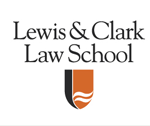Automation & Predictive Analytics in Patent Prosecution: USPTO Implications & Policy
Document Type
Article
Publication Title
Georgia State University Law Review
Journal Abbreviation
Ga. St. U. L. Rev.
Abstract
Artificial-intelligence technological advancements bring automation and predictive analytics into patent prosecution. The information asymmetry between inventors and patent examiners is expanded by artificial intelligence, which transforms the inventor–examiner interaction to machine–human interactions. In response to automated patent drafting, automated office-action responses, “cloems” (computer-generated word permutations) for defensive patenting, and machine-learning guidance (based on constantly updated patent-prosecution big data), the United States Patent and Trademark Office (USPTO) should reevaluate patent-examination policy from economic, fairness, time, and transparency perspectives. By conceptualizing the inventor–examiner relationship as a “patenting market,” economic principles suggest stronger efficiencies if both inventors and the USPTO have better information in an artificial-intelligence-driven market. Based on economics of information and institutional-design perspectives, the USPTO should develop a counteracting artificial-intelligence unit in response to artificial-intelligence proliferation.
First Page
1185
Last Page
1244
Publication Date
2019
Recommended Citation
Tabrez Ebrahim,
Automation & Predictive Analytics in Patent Prosecution: USPTO Implications & Policy,
35
Ga. St. U. L. Rev.
1185
(2019).
Available at:
https://lawcommons.lclark.edu/faculty_articles/177

